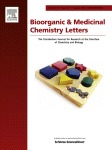Synthesis of a Microcystis aeruginosa predicted metabolite with antimalarial activity
Dublin Core
Título
Synthesis of a Microcystis aeruginosa predicted metabolite with antimalarial activity
Tema
Abstract
Marine natural products1 play an important role in drug development particularly in anticancer, antibiotics and antiparasitics drugs.2 Various bioactive cyanobacterial compounds exhibit unique structural features like cyclic peptides containing azole heterocycles. 3 It is well known that macrocyclic peptides can demonstrate drug-like physicochemical and pharmacokinetic properties such as good metabolic stability, solubility, lipophilicity and bioavailability.4 In addition, asymmetrical cyclopeptides are considered as new scaffolds for supramolecular chemistry and provides an important method for the development and preparation of nanoscale objects.5 Examples of azole cyclopeptides are aerucyclamide B (1),6 dendroamide A (2),7 and venturamide A (3),8 Figure 1. Aerucyclamide B was isolated in 2008 by Gademann and co-workers from the toxic freshwater cyanobacterium Microcystis aeruginosa PCC 7806 and displays potent and selective antiplasmodial activity against Plasmodium falciparum K1. This species is the most virulent of the genus Plasmodium and causes more than 95% of malaria-related morbidity and mortality. According to the World Health Organization 2011 report, there were an estimated 216 million episodes and 655000 deaths of malaria in 2010.9 Various antimalarial drugs are presently used for the treatment of this tropical disease, but the rapid spread of resistance seriously compromises their efficacy.10
Autor
Fuente
Editor
Fecha
Derechos
Información sobre Derechos de Autor
(Por favor lea este aviso antes de abrir los documentos u objetos)
La legislación uruguaya protege el derecho de autor sobre toda creación literaria, científica o artística, tanto en lo que tiene que ver con sus derechos morales, como en lo referente a los derechos patrimoniales con sujeción a lo establecido por el derecho común y las siguientes leyes
(LEY 9.739 DE 17 DE DICIEMBRE DE 1937 SOBRE PROPIEDAD LITERARIA Y ARTISTICA CON LAS MODIFICACIONES INTRODUCIDAS POR LA LEY DE DERECHO DE AUTOR Y DERECHOS CONEXOS No. 17.616 DE 10 DE ENERO DE 2003, LEY 17.805 DE 26 DE AGOSTO DE 2004, LEY 18.046 DE 24 DE OCTUBRE DE 2006 LEY 18.046 DE 24 DE OCTUBRE DE 2006)
ADVERTENCIA - La consulta de este documento queda condicionada a la aceptación de las siguientes condiciones de uso: Este documento es únicamente para usos privados enmarcados en actividades de investigación y docencia. No se autoriza su reproducción con fines de lucro. Esta reserva de derechos afecta tanto los datos del documento como a sus contenidos. En la utilización o cita de partes debe indicarse el nombre de la persona autora.
Formato
Idioma
Tipo
Identificador
Document Item Type Metadata
Original Format
- Fecha de agregación
- September 27, 2012
- Colección
- Bibliografía Nacional Química
- Tipo de Elemento
- Document
- Etiquetas
- Antipaludico, Antiparasitarios, Mycrocystis Aeruginosa
- Citación
- Peña, Stella, “Synthesis of a Microcystis aeruginosa predicted metabolite with antimalarial activity,” RIQUIM - Repositorio Institucional de la Facultad de Química - UdelaR, accessed July 3, 2024, https://riquim.fq.edu.uy/items/show/150.
- Archivos

